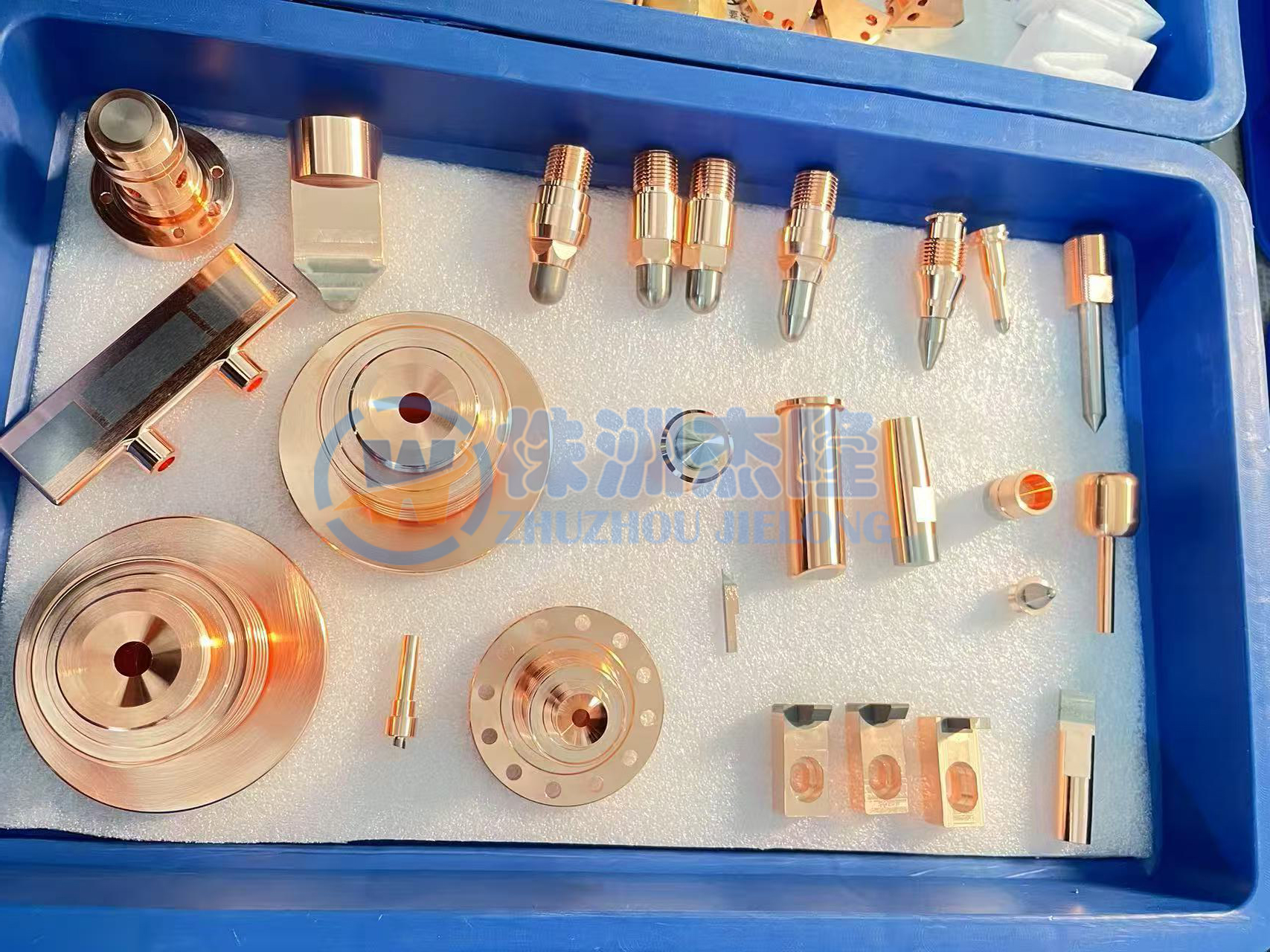Common Issues with Tungsten Copper Electrodes and Their Solutions
Tungsten copper electrodes are widely used in industries that require high-performance materials, especially in high-temperature and high-pressure environments. However, like any advanced material, tungsten copper electrodes can face a range of common issues that affect their performance and longevity. In this article, we will explore these issues and offer practical solutions.
1. Surface Damage of Tungsten Copper Electrodes
One of the most common problems faced by tungsten copper electrodes is surface damage. This can include wear, erosion, or corrosion of the electrode surface, particularly when used in high-frequency or high-power applications. Surface damage reduces the efficiency and accuracy of the electrode, which can ultimately affect the overall machining process.
Solution:
To minimize surface damage, regular inspection and maintenance of the electrode surface are crucial. If significant wear or corrosion is observed, it is important to either replace or repair the electrode. Furthermore, using high-quality tungsten copper alloys can significantly extend the lifespan of the electrode and reduce the chances of surface damage.
2. Melting of Electrodes
In some cases, especially during high-power electrical discharge machining (EDM), the tungsten copper electrode may experience melting due to excessive current or temperature. This is more likely to occur when the electrode is exposed to prolonged use at high power settings.
Solution:
To prevent electrode melting, ensure that the electrical discharge parameters are set within the recommended range. This includes adjusting the voltage and current to avoid overheating the electrode. Additionally, incorporating efficient cooling systems such as liquid cooling can help regulate the temperature and prevent electrode melting.
3. Decrease in Electrical Conductivity
Tungsten copper electrodes are known for their excellent electrical conductivity, but prolonged usage can cause a reduction in this property. This is often due to the formation of an oxide layer or material fatigue, which negatively impacts the electrode's conductivity.
Solution:
Regular cleaning and maintenance of the electrode surface are necessary to remove any oxide layers and debris that may have accumulated. Additionally, using high-quality tungsten copper alloys that resist oxidation can maintain the electrode's electrical conductivity over time. It is also advisable to avoid operating the electrode under excessive load, which can further degrade its conductivity.
4. Thermal Expansion Issues
Tungsten copper electrodes are subject to thermal expansion when exposed to high temperatures. This thermal expansion can cause deformation, particularly in high-stress environments, leading to uneven contact surfaces and compromising machining accuracy.
Solution:
To address thermal expansion issues, it is important to select tungsten copper alloys with a lower coefficient of thermal expansion. This will reduce the likelihood of deformation during use. Additionally, optimizing the working conditions to avoid rapid temperature fluctuations can help minimize thermal expansion effects.
5. Electrode Lifespan Problems
The lifespan of a tungsten copper electrode is a concern for many users. In high-frequency and high-power applications, the electrode may degrade quickly, leading to the need for frequent replacements, which can increase operational costs.
Solution:
To extend the lifespan of the electrode, it is essential to select a high-quality tungsten copper alloy and to maintain optimal machining parameters. Furthermore, implementing regular maintenance checks to assess wear and tear and replacing electrodes that show signs of degradation will help ensure longer-lasting performance.
6. Brittleness of Electrodes
Despite their high hardness, tungsten copper electrodes can be brittle, especially under high-impact or shock-load conditions. This brittleness can cause the electrode to break or fracture during operation, leading to damage and downtime.
Solution:
To minimize the brittleness of the electrode, avoid subjecting it to excessive shock or impact forces. Additionally, using tungsten copper alloys with improved toughness can reduce the risk of breakage. Proper handling and care during the installation and operation of the electrodes are also critical to prevent damage.
7. Stability Issues Under Extreme Conditions
Tungsten copper electrodes can experience stability issues when exposed to extreme temperatures, pressures, or other harsh environmental conditions. These stability problems can affect the electrode’s performance, causing fluctuations in machining results.
Solution:
To enhance the stability of the electrode, choose tungsten copper alloys that are specifically designed for extreme conditions. It is also important to monitor and control the working environment, ensuring that the electrode operates within its specified limits. Additionally, using temperature regulation systems to maintain consistent operating conditions can help improve the stability of the electrode.
8. Difficulty in Electrode Machining
Machining tungsten copper electrodes can be challenging due to their hardness and brittleness. This can make it difficult to achieve high-precision cuts, especially when intricate shapes or fine details are required.
Solution:
To overcome the challenges of machining tungsten copper electrodes, consider using advanced techniques such as laser machining or electrical discharge machining (EDM). These methods can offer better precision and reduce the difficulty associated with traditional machining methods. Additionally, optimizing cutting parameters and using specialized tools designed for tungsten copper alloys can improve the machining process.
Conclusion
Tungsten copper electrodes are invaluable in various high-performance applications, but they are not without their challenges. By addressing common issues such as surface damage, electrode melting, conductivity loss, and brittleness, users can significantly extend the lifespan and improve the performance of their electrodes. Regular maintenance, proper material selection, and optimal machining conditions are key to minimizing these issues and ensuring the efficiency and longevity of tungsten copper electrodes.







